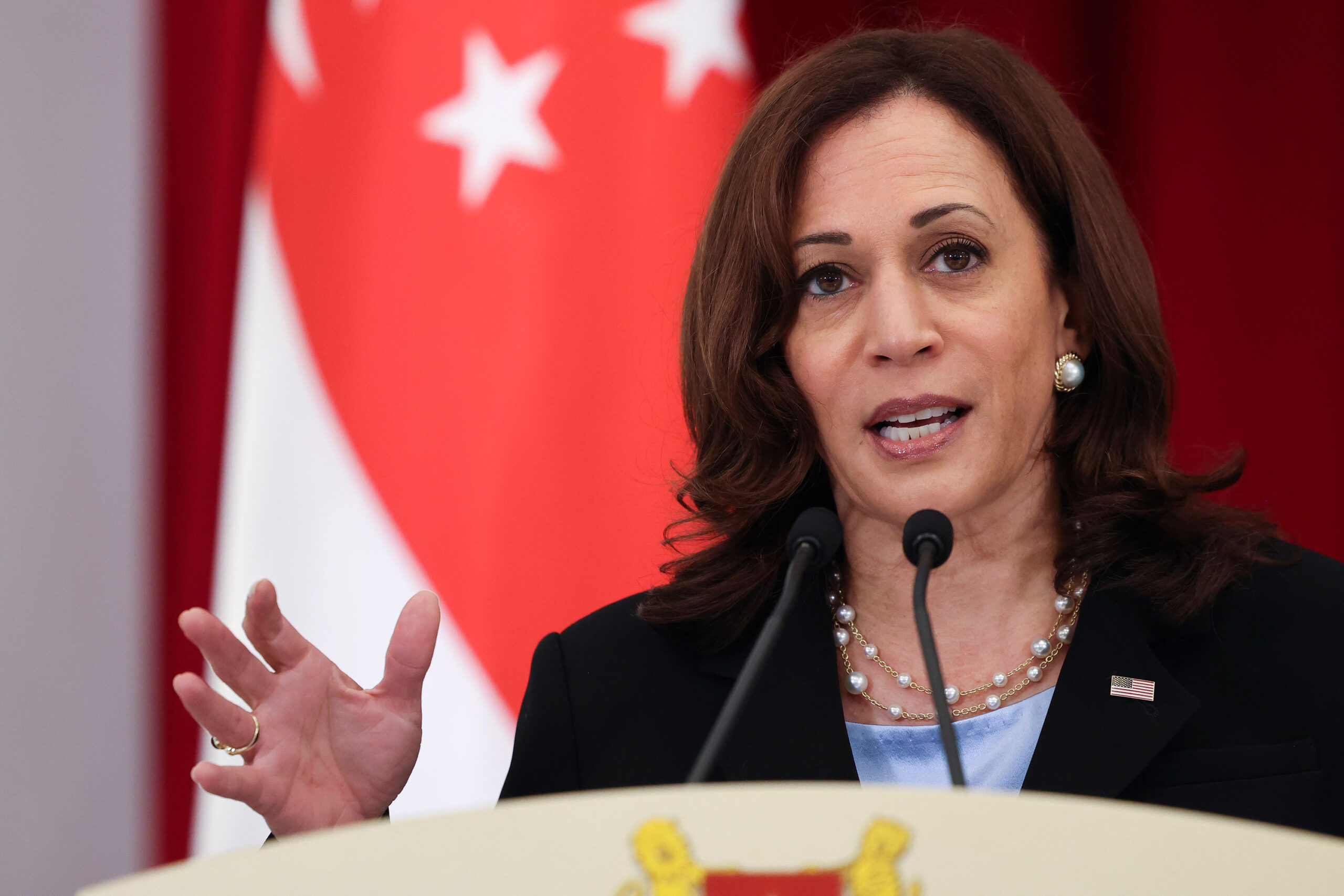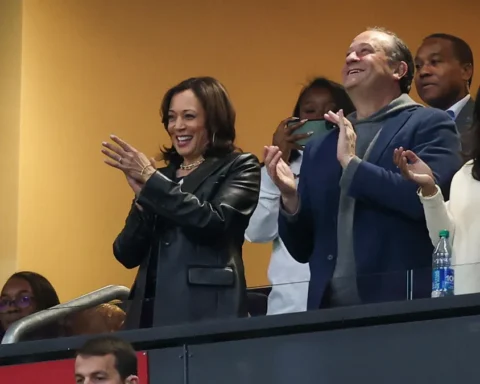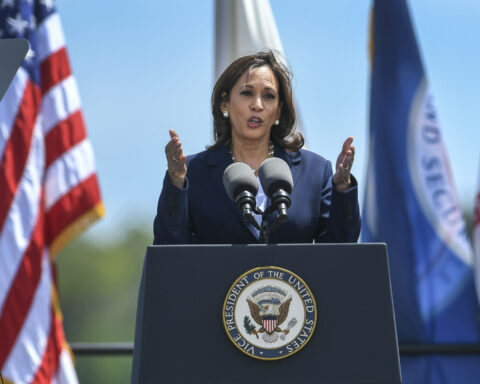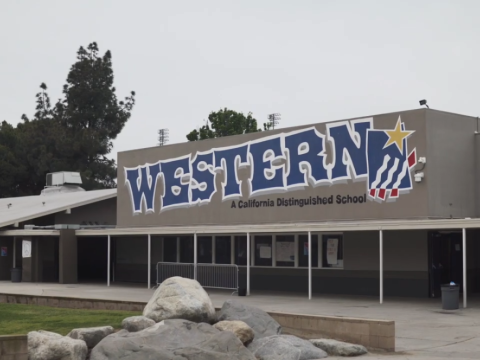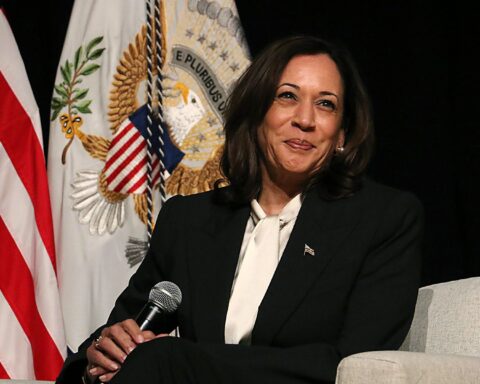Vice President Kamala Harris’s decision to cancel her Friday rally in California with embattled Democratic Gov. Gavin Newsom dealt a setback to Democrats’ intensive efforts to spur their voters to vote against the effort to recall the first-term governor.
The former California senator would have been among the most high-profile surrogates for Newsom, who’s facing a September 14 special election to oust him, motivated in part by anger toward his pandemic restrictions. But Harris, who has been villainized by the right throughout her short tenure in the White House, would have faced enormous blowback if she had proceeded with a political event following the terrorist attack in Afghanistan that killed 13 and wounded 18 US service members outside Kabul’s airport on Thursday as the US is frantically trying to complete its evacuation mission ahead of its August 31 deadline to withdraw from the country.
“These courageous servicemembers died while saving countless lives. They are heroes,” Harris said in a statement Thursday evening. “Our country is grateful to all our women and men in uniform, and in particular, those working today to get Americans and our Afghan partners out of harm’s way. And we will complete that mission.”
Harris, who had been in Singapore and Vietnam this week, was scheduled to appear with Newsom at the Cow Palace Arena & Event Center in the Bay Area Friday afternoon for a car rally. Golden State Democrats were looking forward to Friday’s homecoming of sorts for Harris because of her immense popularity within the Democratic base and her unique ability to galvanize both female voters and Democratic voters of color at a time when the party is worried that disaffected California Democrats will sit out the recall election.
But by Thursday at 3 p.m. EST, the vice president’s spokeswoman, Symone Sanders, tweeted that following Harris’ visit to Joint Base Pearl Harbor-Hickam Thursday afternoon, she would immediately return to Washington, DC. Earlier in the day, Harris had participated — virtually — in a Situation Room meeting with the President and US Defense Secretary Lloyd Austin, Secretary of State Antony Blinken and Joint Chiefs Chairman Gen. Mark Milley while aboard Air Force Two as she traveled from Vietnam to Guam.
After the “Stop the Republican Recall” campaign allied with Newsom announced the cancellation of the event, the team said they had no further updates about when or whether Harris would reschedule an appearance with Newsom. The White House has said that Biden also intends to campaign for Newsom but the President’s schedule remains very much in flux as he faces down the August 31 deadline to pull US forces out of Afghanistan.
Polls have shown that Republican voters are much more engaged and aware of the recall election as they seek to remove Newsom, and Harris could have reinforced the stakes of his potential ouster and replacement by a Republican — not only pointing to the power of the office to advance women’s rights, but also by raising awareness about the fragility of the Democratic majority in the 50-50 US Senate — and how California affects that equation.
Harris embodies the importance of the Democratic governor’s appointment powers, which Newsom used to name her replacement as she moved from the US Senate to the White House. Newsom could potentially be tasked with that role again if he had to name a replacement for US Sen. Dianne Feinstein, who is 88, if she were to decide to retire early — though she has no plans to do so.
Still, the Harris campaign event for Newsom could have created terrible optics for her as she seeks to define her role within the Biden administration. The vice president was already under fire from her GOP critics for proceeding with her planned trip this past week to Singapore and Vietnam at such a difficult time for the Biden administration as they conducted the massive airlift of Americans, foreign nationals and tens of thousands of Afghans who assisted the US during the 20-year war effort.
Throughout the week while Harris was overseas, Biden had repeatedly raised the alarm about the potential attacks in Kabul as Harris monitored the situation from afar. In remarks before her departure from Hanoi Thursday, Harris stressed that the highest priority of the US “right now is evacuating American citizens, evacuating Afghans who worked with us.” She placed particular emphasis on the importance of protecting at-risk women and children — which has been a central plank of her portfolio and her agenda as vice president and throughout her many past roles in public life.
“We have made significant progress,” Harris said, speaking before the attack. “As you know, each day and night, we continue to evacuate thousands of people, understanding that it is, it is risky for them to be there, it is a dangerous and difficult mission, but it must be seen through — and we intend to see it through, as best as we can.”
It had already been a trying week for Harris, whose departure from Singapore for Vietnam was delayed by several hours Tuesday after her office was informed by the US embassy in Hanoi, Vietnam, of a “report of a recent possible anomalous health incident,” which is how the government usually refers to the mysterious Havana syndrome that has sickened hundreds of US officials over the past few years.
“The Vice President’s traveling delegation was delayed from departing Singapore because the Vice President’s office was made aware of a report of a recent possible anomalous health incident in Hanoi, Vietnam. After careful assessment, the decision was made to continue with the Vice President’s trip,” spokeswoman for the US embassy in Hanoi Rachael Chen said in a statement Tuesday. The intelligence community still doesn’t have an official explanation for Havana syndrome, which has been defined by a mix of sensory experiences and physical symptoms that have sickened hundreds of US diplomats, spies and troops around the world.
New data from Edison Research shows that over 2 million ballots have now been cast in the California recall election, with some 22 million vote-by-mail ballots now out to all of the state’s registered voters. Democratic leaders have been encouraged by some of the early tea leaves in a state where Democrats outnumber Republicans by two-to-one.
Paul Mitchell, vice president with Political Data Inc., a firm that does work for Democratic candidates, progressive organizations and non-partisan campaigns that has been tracking ballots returned in real time, said that as of Thursday morning Democrats were overperforming in 52 counties when their share of ballots returned is compared to their party registration in those counties.
But he noted that Republicans are now overperforming their registration benchmark in 28 counties. That is a significant data point that underscores the level of enthusiasm among GOP voters to force Newsom out of office, particularly when one considers how skittish and suspicious GOP voters were last year about vote-by-mail efforts because of former President Donald Trump’s efforts to erode confidence in the process.
California voters are being asked two questions on the ballot: the first, “yes” or “no” on whether they want to recall Newsom, and second, who they would like to see replace him. Forty-six candidates of all political persuasions are running to replace Newsom. More than a half-dozen Democrats are running as replacement candidates, but none of them are establishment Democratic candidates, and party leaders have urged voters to skip the second question altogether with the slogan “vote no, and go.”

